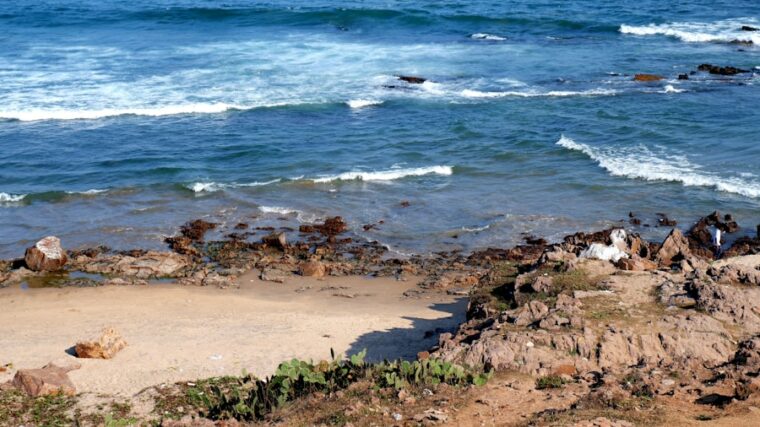The Philippines is an archipelago in Southeast Asia, consisting of over 7,000 islands. It is known for its stunning beaches, vibrant culture, and rich history. The country is a melting pot of different influences, including Spanish, American, and indigenous cultures, which is reflected in its diverse cuisine, traditions, and architecture. The Philippines is also home to a wide variety of flora and fauna, making it a paradise for nature lovers and outdoor enthusiasts. With its warm climate, friendly locals, and affordable prices, the Philippines has become an increasingly popular destination for travelers from around the world.
The capital city of Manila is a bustling metropolis with a mix of modern skyscrapers and historic landmarks. It is a great place to experience the energy and diversity of Filipino culture, with its lively street markets, colorful festivals, and delicious street food. Outside of the city, visitors can explore the country’s natural beauty, from the famous white sand beaches of Boracay to the lush rice terraces of Banaue. Whether you’re looking for relaxation on a tropical island or adventure in the mountains, the Philippines has something to offer for every type of traveler.
Top Destinations in the Philippines
One of the top destinations in the Philippines is Palawan, a province known for its crystal-clear waters, limestone cliffs, and diverse marine life. The island of Coron is a popular spot for snorkeling and diving, with its numerous shipwrecks and vibrant coral reefs. El Nido is another must-visit destination in Palawan, with its stunning lagoons, hidden beaches, and dramatic karst formations. For those seeking a more secluded getaway, the island of Siargao is a paradise for surfers and beach lovers, with its laid-back atmosphere and world-class waves.
Another iconic destination in the Philippines is the Chocolate Hills in Bohol, a geological formation of over 1,200 cone-shaped hills that turn brown during the dry season, resembling giant chocolate kisses. The island is also home to the adorable tarsier, one of the world’s smallest primates. Cebu is another popular destination, known for its historic landmarks, vibrant nightlife, and beautiful beaches. Visitors can explore the colonial architecture of Cebu City, swim with whale sharks in Oslob, or relax on the white sand beaches of Bantayan Island.
Best Time to Visit the Philippines
The best time to visit the Philippines is during the dry season, which typically runs from November to April. This is when the weather is most pleasant, with sunny days and little to no rainfall. However, it’s important to note that the peak tourist season falls during the Christmas holidays and Holy Week (Easter), so prices may be higher and popular destinations more crowded during these times. If you prefer to avoid the crowds, consider visiting during the shoulder seasons of May to June or September to October.
The wet season in the Philippines runs from May to October, with typhoons being most common from July to September. While this time of year may not be ideal for beach activities or outdoor adventures, it can be a great opportunity to experience local festivals and cultural events. The Ati-Atihan Festival in January and Sinulog Festival in Cebu are just a few examples of the vibrant celebrations that take place throughout the country. Ultimately, the best time to visit the Philippines depends on your personal preferences and what activities you want to experience during your trip.
Cultural Experiences in the Philippines
The Philippines is a country rich in culture and traditions, with a mix of indigenous, Spanish, American, and Asian influences. One of the best ways to immerse yourself in Filipino culture is through its festivals and celebrations. From colorful parades to traditional dances and music, these events offer a glimpse into the country’s history and heritage. The Ati-Atihan Festival in Aklan is one of the oldest and most famous festivals in the Philippines, featuring street dancing and tribal performances in honor of the Santo Niño (Child Jesus). The Sinulog Festival in Cebu is another major event, drawing millions of visitors each year for its grand procession and lively street parties.
For those interested in history and architecture, a visit to Intramuros in Manila is a must. This walled city was built during the Spanish colonial period and is home to several well-preserved landmarks, including Fort Santiago and San Agustin Church. Another cultural experience not to be missed is trying traditional Filipino cuisine. From adobo (marinated meat stew) to lechon (roast pig) and halo-halo (mixed dessert), Filipino food is a delicious blend of flavors and influences. Whether you’re dining at a local eatery or joining a cooking class, sampling Filipino dishes is an essential part of any visit to the Philippines.
Outdoor Adventures in the Philippines
The Philippines offers a wide range of outdoor adventures for nature lovers and thrill-seekers alike. One of the most popular activities is island hopping, where visitors can explore pristine beaches, hidden lagoons, and vibrant coral reefs. Palawan and Cebu are both great starting points for island hopping tours, with options for snorkeling, diving, and even camping on remote islands. For those seeking adrenaline-pumping experiences, canyoneering in Kawasan Falls or spelunking in Sagada’s caves are sure to satisfy your adventurous spirit.
Hiking enthusiasts will find plenty of opportunities to explore the Philippines’ diverse landscapes, from dense jungles to towering mountains. Mt. Pulag in Benguet is one of the country’s highest peaks and offers breathtaking views of sea clouds at sunrise. Meanwhile, Mt. Mayon in Albay is known for its perfect cone shape and challenging trails for experienced hikers. Waterfalls are also abundant in the Philippines, with Tumalog Falls in Cebu and Tinago Falls in Iligan City being just a few examples of natural wonders waiting to be discovered.
Local Cuisine and Dining in the Philippines
Filipino cuisine is a delightful fusion of flavors and influences from various cultures, making it a unique culinary experience for visitors. One of the most iconic dishes is adobo, which consists of marinated meat (usually chicken or pork) cooked in vinegar, soy sauce, garlic, bay leaves, and black peppercorns. Another must-try dish is lechon, a whole roasted pig that is often served during special occasions and festivals. Seafood lovers will also be delighted by the abundance of fresh fish and shellfish available throughout the country.
For those with a sweet tooth, Filipino desserts are not to be missed. Halo-halo is a popular shaved ice dessert that comes with an assortment of toppings such as sweet beans, fruits, jellies, and ice cream. Bibingka and puto bumbong are traditional rice cakes often enjoyed during Christmas season. When it comes to dining out in the Philippines, visitors can choose from a wide range of options including street food vendors, local eateries (carinderia), upscale restaurants, and themed dining experiences such as boodle fights (a communal feast served on banana leaves). No matter where you choose to dine, you’re sure to find delicious and affordable meals that will leave you craving more.
Practical Tips for Traveling in the Philippines
When traveling to the Philippines, it’s important to be mindful of local customs and etiquette. Filipinos are known for their hospitality and friendliness, so it’s always appreciated to show respect towards locals by using polite language (po/opo) and being mindful of cultural sensitivities. English is widely spoken throughout the country, making it easy for travelers to communicate with locals.
In terms of transportation, getting around the Philippines can be done through various modes such as tricycles (motorcycle with sidecar), jeepneys (colorful public buses), taxis, buses, ferries, and domestic flights. It’s advisable to negotiate fares beforehand when using tricycles or taxis to avoid being overcharged. For longer distances between islands or provinces, domestic flights are often the most convenient option.
Health and safety should also be taken into consideration when traveling in the Philippines. It’s recommended to drink bottled water or purified water to avoid stomach issues caused by contaminated water sources. Mosquito repellent is essential when visiting areas prone to dengue fever or malaria. Travel insurance is also highly recommended to cover unexpected medical expenses or emergencies.
In conclusion, the Philippines offers a diverse range of experiences for travelers seeking adventure, relaxation, cultural immersion, and culinary delights. With its stunning natural landscapes, warm hospitality, and vibrant culture, it’s no wonder that this archipelago has become an increasingly popular destination for tourists from around the world. Whether you’re exploring ancient ruins in Manila or lounging on pristine beaches in Palawan, there’s something for everyone to enjoy in this tropical paradise. By following practical tips for traveling in the Philippines and being open to new experiences, visitors can make the most out of their trip and create lasting memories in this beautiful country.


